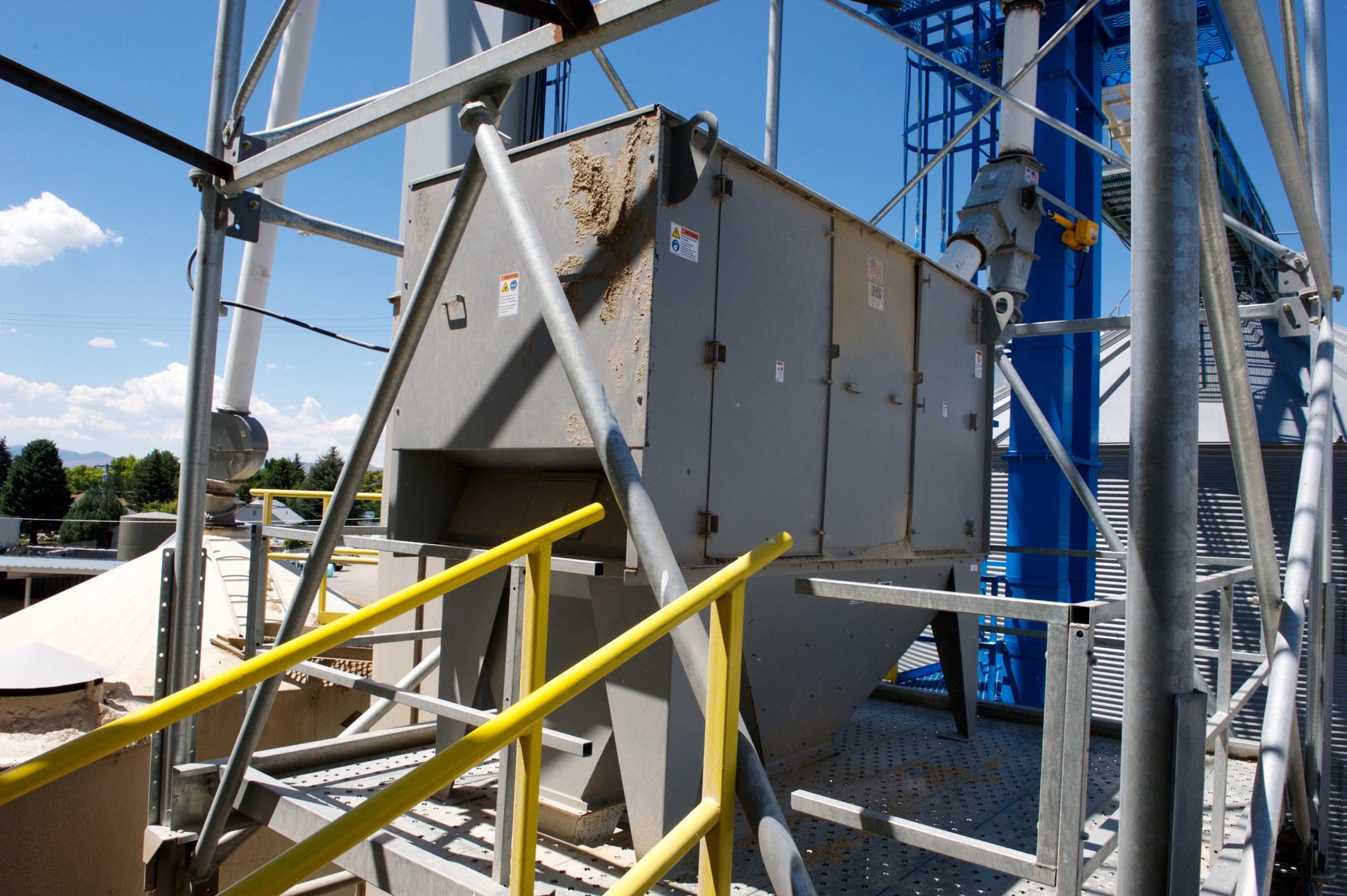Reducing cross-contamination often means changing how your grain handling facility processes and transports your animal feed. If your ingredients or materials leave behind residue, you will need to clean the equipment before loading on another batch of feed.
Conveyor systems can cause cross-contamination just as much as they can prevent it. Traditionally, feed mill and food processing facilities have used open conveyor belts and throughways to quickly move their products from one stage of production to the next, but companies are switching to enclosed conveyor systems as a way of limiting cross-contamination.
The Disadvantage of Open Conveyor Systems
Bucket elevators and flat-top conveyor belts have long been praised for their simplicity, but after the 2011 passage of the FDA’s Food Safety Modernization Act, feed processing plants have been looking for ways to reduce cross-contamination without increasing their overall production costs.
Open conveyor systems tend to leave products exposed to the ambient air, which can attract dust, dirt, and other debris. Excess dust can also lead to a dust explosion if too much gets in the air. The food can also spill or leak out of these containers, which can lead to residue and cross-contamination. The company will then have to spend precious time and resources to clean off the equipment before another recipe can be loaded onto the machine.
If your business processes more than one type of feed within a single day or shift, open conveyor systems can lead to costly delays, thus limiting your facility’s output.
Leaving products exposed to ambient air can also change the physical makeup of the feed. The materials may be exposed to condensation if there is too much moisture in the air. Heat and humidity can also affect the overall quality of the feed.
The Benefits of Enclosed Conveyor Systems
Many business owners now prefer using enclosed conveyor systems, such as tubular drag conveyors, so they don’t have to worry as much about the spread of debris and other airborne contaminants. Instead of leaving products exposed, enclosed systems move products within a sealed tube using a coated, flexible stainless-steel drag cable pulled through on a loop.
The food products stay inside the container, so they don’t release as much dust and debris into the air. Workers don’t have to spend as much time cleaning off the surface of the equipment. Excess dust can also lead to explosions and respiratory infections. This improves worker safety and the overall cleanliness of the facility.
Reducing the food’s exposure to ambient air reduces condensation and the possibility of cross-contamination. Dust, dirt, moisture, and debris can’t get into the sealed tube, so the feed does not change as it moves from point A to B.
Instead of pouring or dumping products at the discharge spot, enclosed systems handle source materials with care, so they don’t break apart or suffer from shrinkage, which can hurt your bottom line. This is the safest, most reliable way to transport your inventory.
For more information about choosing a conveyor system for your feed processing system, contact the professionals at Halverson Company, your number one feed mill construction company.

